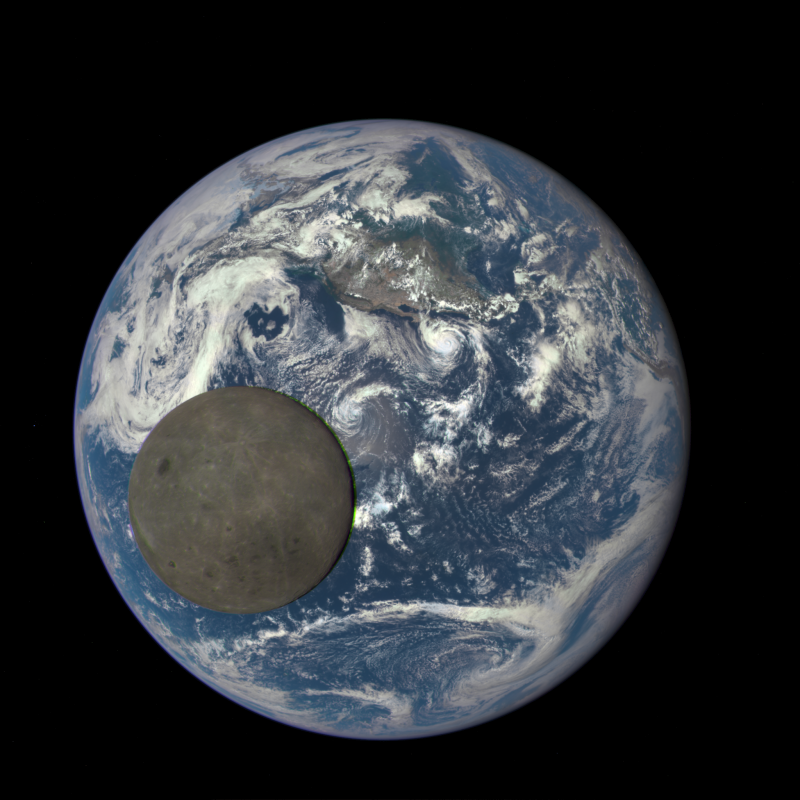This animation still image shows the far side of the moon, illuminated by the sun, as it crosses between the DISCOVR spacecraft’s Earth Polychromatic Imaging Camera (EPIC) camera and telescope, and the Earth – one million miles away.
According to NASA’s blog post titled “From a Million Miles Away, NASA Camera Shows Moon Crossing Face of Earth” –
The images were captured by NASA’s Earth Polychromatic Imaging Camera (EPIC), a four megapixel CCD camera and telescope on the DSCOVR satellite orbiting 1 million miles from Earth. From its position between the sun and Earth, DSCOVR conducts its primary mission of real-time solar wind monitoring for the National Oceanic and Atmospheric Administration (NOAA).
The blog post explains that the photos are actually composites from “three separate monochrome exposures taken by the camera in quick succession”. The Flickr post also mentioned that the telescope that took these photos with a four megapixel CCD camera! I was wondering about the colour distortion on the right edge of the Moon (more visible in the still photo) and the post explains as follows:
Combining three images taken about 30 seconds apart as the moon moves produces a slight but noticeable camera artifact on the right side of the moon. Because the moon has moved in relation to the Earth between the time the first (red) and last (green) exposures were made, a thin green offset appears on the right side of the moon when the three exposures are combined. This natural lunar movement also produces a slight red and blue offset on the left side of the moon in these unaltered images.
Here is a cool video made from the still images:
And then, when you look in the other direction far off into space, you see amazing sights like this image of a storm in the Lagoon Nebula in the Sagittarius constellation:
Images from the NASA Goddard Flight Center, licensed CC BY 2.0


 RSS – Posts
RSS – Posts
What do you think?